I estimated recently that a first strike on North Korea would within the first week result in around 25 to 50 million casualties in various locations on earth primarily in North and South Korea.
A pre-emptive strike by Trump (a surgical strike) of all nuclear facilities in North Korea would likely be answered by NK artillery ending Seoul Korea. So, anyone there likely would be harmed in some way or dead by the resulting firestorm covering the whole city. If you study the bombing of Dresden or the firebombing of Tokyo and other Japanese cities this likely would be what you would expect that anything that could burn: wood or anything burnable: toxic or not would burn. And any gas lines in the vicinity on fire until the gas mains were turned off. So, anyone who couldn't run away, bicycle away, even if they were outside buildings might choke on toxic smoke from toxic things burning or just regular smoke from wood structures burning from North Korean Artillery. Main roads and arteries likely would be cut by falling debris from buildings so the only exit likely would be by bicycle, dirt bike motorcycle or on foot or helicopter if it could fly through this. Cars and trucks would be immobile from debris falling into the streets. Since much of Seoul, Korea is high rise buildings and apartments these places would all be death traps much like on 9-11 in New York city.
So, what I'm writing about here would only be the first 24 hours of battle.
I have been to Seoul, Korea and stayed in a hotel overlooking the historical areas where royalty lived in past centuries there and also visited these historical grounds which is something I would recommend to other world travelers to do at some point.
begin quote from:
How the US would strike first against North Korea - CNNPolitics
www.cnn.com/2017/08/11/politics/us-north-korea-strike-first/index.html
4 hours ago - It's the no-win situation that can only be imagined by US military officials ... The last resort: How a US strike on North Korea could play out.
The last resort: How a US strike on North Korea could play out ...
fox2now.com/2017/.../the-last-resort-how-a-us-strike-on-north-korea-could-play-out/
4 hours ago - It's the no-win situation that can only be imagined by US military officials tasked with preparing for a worst-case scenario -- conducting a ...
The last resort: How a US-strike-on North Korea could play out ...
https://www.youtube.com/watch?v=En6f7Z9-TLI
49 mins ago - Uploaded by MILITARY NEWS UPDATE
It's the no-win situation that can only be imagined by US military officials tasked with preparing for a worst ...The last resort: How a US strike on North Korea could play out
Story highlights
- Launching a devastating preemptive strike against North Korea is almost unanimously considered a last resort
- Millions of innocent citizens could be caught in the crossfire if the US and its regional allies were to initiate a first strike
Washington (CNN)It's
the no-win situation that can only be imagined by US military officials
tasked with preparing for a worst-case scenario -- conducting a
preemptive strike on North Korea.
With
little time to evacuate, millions of innocent citizens would be caught
in the crossfire if the US and its regional allies were to initiate a
first strike, that would almost certainly result in high casualties on
both sides.
Friday
morning, President Donald Trump warned on Twitter that "Military
solutions are now fully in place, locked and loaded," though he said
"hopefully Kim Jong Un will find another path!"
A
military operation would consist of a swift and multi-dimensional
attack, as the fight would be defined by the first minute of combat,
according to Jerry Hendrix, a retired Navy captain and senior fellow at
the Center for New American Security.
While
Hendrix has not been briefed on the specifics of a possible preemptive
strike option, he told CNN that the operation would likely include
several strategies aimed to neutralize North Korea's defensive and
counterstrike capabilities.
Countering
North Korea's relatively formidable surface-to-air missile defense
capabilities, stealth American F-22s, F-35s and B-2 bombers would likely
lead a joint air campaign with the help of Japanese and South Korean
F-15 or F-16 fighters, he said.
Unmanned aircraft could also be used to limit risk to pilots.
The
US would likely move additional aircraft to the region in the event of
an imminent strike, but also maintains two major air bases in South
Korea -- Osan with F-16 fighters and A-10 "tank killers," and Kunsan
with F-16s.
Heavy airpower can be called in from the Pacific island of Guam, through which the US rotates B-1, B-2 and B-52 bombers.
As
US and allied aircraft take out priority targets from the sky, American
warships would launch a barrage of Tomahawk missiles concentrated on
North Korean missile sites, air defense systems and response corridors
capable of launching a retaliatory nuclear weapon, Hendrix said.
The
US Navy has 10 guided-missile cruisers and destroyers based in Japan.
The ships are armed with Tomahawk missiles for offensive purposes and
the Aegis missile defense system that could be used to intercept North
Korean launches.
The
US could use cyber attacks to disrupt Pyongyang's weapons programs --
though experts say that would only delay, rather than stop them.
Urgent
efforts to take out priority targets like air defense systems,
retaliatory missile launch sites and service facilities -- coupled with
assumptions that the US-led offensive would be met with heavy resistance
-- are likely to take a toll on the US' inventory of bombs and
missiles, warned Hendrix.
"What is the plan to resupply?" he said.
The
US would need to ensure it had enough bombs, missiles and electronic
warfare planes to destroy or disable North Korea's air defenses before
deploying its heavy bombers, likely B-1s stationed in Guam, needed to
strike North Korea's fortified nuclear weapons sites, according to Carl
Schuster, a former director of operations at the US Pacific Command's
Joint Intelligence Center.
US B-1B Lancer bomber
Engines: four turbofans with afterburner
Wingspan: 137 feet (41.8 meters) extended forward, 79 feet (24.1 meters) swept aft
Length: 146 feet (44.5 meters)
Height: 34 feet (10.4 meters)
Weight: 95 tons (86,183 kilograms)
Speed: 900-plus mph
Ceiling: more than 30,000 feet (9,144 meters)
Payload: 37.5 tons (34,019 kilograms)
Weapons: Joint Direct Attack Munitions. JDAMs are tail sections with GPS navigation capabilities that are attached to 2,000-, 1,000- and 500-pound bombs.
Source: US Air Force
Wingspan: 137 feet (41.8 meters) extended forward, 79 feet (24.1 meters) swept aft
Length: 146 feet (44.5 meters)
Height: 34 feet (10.4 meters)
Weight: 95 tons (86,183 kilograms)
Speed: 900-plus mph
Ceiling: more than 30,000 feet (9,144 meters)
Payload: 37.5 tons (34,019 kilograms)
Weapons: Joint Direct Attack Munitions. JDAMs are tail sections with GPS navigation capabilities that are attached to 2,000-, 1,000- and 500-pound bombs.
Source: US Air Force
Within
minutes of initiating the attack, US aircraft and artillery assets
would also be forced to coordinate with allied forces to destroy the
thousands of North Korean missile tubes pointed directly at the South
Korean capital of Seoul.
And that would just be the beginning.
"The
problem is not hitting North Korea, its what happens next," Joe
Cirincione, president of the Ploughshare Fund, an organization working
to stop nuclear proliferation, told CNN.
"You
strike North Korea, they are going to strike back and they have a
devastating conventional arsenal built up on the border that could lay
waste to Seoul," he said. "Estimates are that hundreds of thousands of
South Koreans would die in the first few hours of combat -- from
artillery, from rockets, from short range missiles -- and if this war
would escalate to the nuclear level, then you are looking at tens of
millions of casualties and the destruction of the eleventh largest
economy in the world."
"That's what you are going to roll the dice on," Cirincione added.
Rising tensions
While
launching a devastating preemptive strike against North Korea is almost
unanimously considered a last resort for the US and analysts said there
are currently no signs that the US is planning a first strike, the
concept of preemptive military action is, at very least, being
considered as an option.
Trump remains committed to keeping "all options on the table" amid tensions with Pyongyang.
Claims
that Pyongyang is considering a missile strike near the US territory of
Guam, coupled with Trump's warning that any further North Korean
threats will be met with "fire and fury," have also fueled concerns of
possible conflict.
The US would
surely use military force in response to any North Korean strike against
American or allied targets, but two US defense officials told CNN on
Thursday that there are no signs of any imminent launch activity from
the rogue state.
On
Thursday, Republican Sen. Lindsay Graham told radio host Hugh Hewitt
that he has discussed the issue of North Korea in great detail with
Trump and could see a scenario where the US carries out a "preemptive
action to enforce the policy of denial of capability to hit the
homeland."
While all war game
scenarios show the US winning a military confrontation, that victory
could come at the cost of hundreds of thousands of deaths, mostly in
South Korea where millions of innocent people -- and nearly 30,000 US
troops -- are already in range of North Korea's current missile
capabilities.
According to the
International Institute for Strategic Studies, North Korea can field
21,000 artillery pieces. Many of those are within range of the 25
million South Koreans living in the Seoul metropolitan area.
"The
scenario of a US preemptive strike is one that acknowledges our
diplomacy has failed -- and our policy for last 25 years has failed,"
said Hendrix. "The only reason this would occur is if there is a
calculation that concludes the long-term threat would result in more
casualties than what would be suffered during a military operation."
But it is the job of Trump's top military commanders to prepare for the day they hope will never come.
While
current and former military professionals are "repulsed" by the
potentially catastrophic consequences of a full-scale military strike,
Hendrix told CNN that "we imagine these scenarios all the time because
what we fear more is an irrational actor with a nuclear weapon that can
reach the US."
Defense Secretary
James Mattis has consistently said that he prefers to resolve issues
diplomatically but reminded Pyongyang on Wednesday that the "regime's
actions will continue to be grossly overmatched by ours and would lose
any arms race or conflict it initiates."
Anatomy of a preemptive strike
While
the US and its allies regularly flex their joint military might in
North Korea's backyard, the proposition of conducting a full-scale
preemptive attack remains a uniquely complex and risky undertaking.
If
Trump were to order the planning of such an operation, logistical
preparations for a successful battlefield campaign against North Korea
would take weeks or even months to put in place, according to analysts.
The
first challenge would be ensure Japan and South Korea are completely
integrated in any plan for military action, according to Hendrix.
China and North Korea
- China is North Korea's primary ally and trading partner
- Trade between the countries was worth $2.6B in the first half of 2017
- China has supported stringent UN sanctions against the North Korea
- But experts say Beijing fears instability in North Korea more than anything
- The collapse of Kim Jong Un's regime could lead to a flood of refugees into China
- While a unified Korea -- ruled from Seoul -- could mean US troops on China's border
"The
US would also need to, at very least, inform China of any potential
strike -- putting them in a position where they know military action and
communicating the expectation that they have to stay out of it," he
said.
Mark Hertling, a retired US
Army general and CNN analyst, said the tens of thousands of US
civilians, many of them military dependents, would first need to be
evacuated from South Korea.
"When
you see dependents beginning to leave South Korea and Japan, then you
realize that North Korea is very close to crossing red lines," Sen.
Graham said on Thursday.
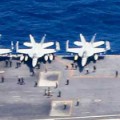
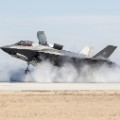
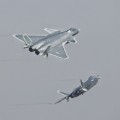


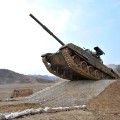
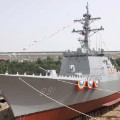
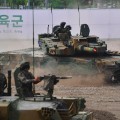

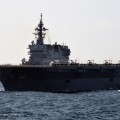
The
US would also need to add to its forces in the region in what Hertling
called "a reinforcement of shooters." These would include US Navy ships
and submarines armed with cruise missiles, plus Air Force bombers that
could operate out of bases in Japan or Guam, he said.
"Some
of these are in places in the region, but not enough to decapitate
North Korea in terms of their artillery," Hertling said.
North
Korea has thousands of conventional artillery pieces within range of
the South Korean capital of Seoul. Studies have estimated South Korean
casualties from artillery barrages to be in the tens of thousands on the
first day of conflict.
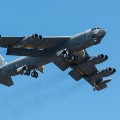
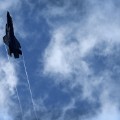
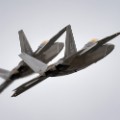
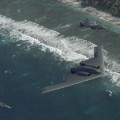
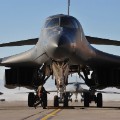
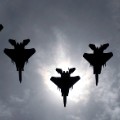
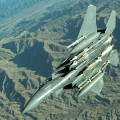

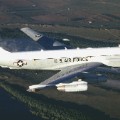
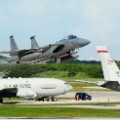
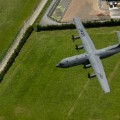
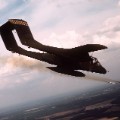

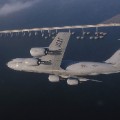
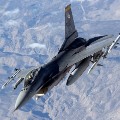
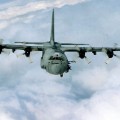
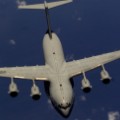

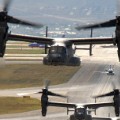
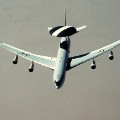
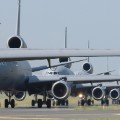
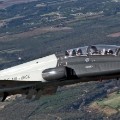

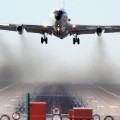
According
to Hertling and Hendrix, the US and its allies would need a couple of
weeks of airstrikes to take out that artillery. And the US would need
the planes, bombs, fuel and support personnel in place to carry out that
campaign, they said, comparing it to the country's Desert Storm
operation against Saddam Hussein's Iraq in 1991.
Hertling
also said at least two US Navy aircraft carrier strike groups would
need to be in the waters near Korea before any US attack.
Once
the priority targets are neutralized, the US and its allies would have
to keep up sustained operations for a fairly long period of time to
maintain constant pressure on Pyongyang until all designated military
targets are destroyed or the operation facilitates a change in regime or
policy, according to Hendrix.
Ground
forces could have a role to play in the next wave of the campaign.
Experts say between 90,000 and 200,000 US troops would be needed to
secure the nuclear sites in North Korea.
According to the Rand
Corporation and the Pentagon, North Korea has dozens of bases
containing nuclear materials -- most of them deep underground -- meaning
it could take time to locate and neutralize them.
And
facing a North Korean military with an estimated one million troops,
South Korea would likely be called upon to contribute a portion of its
500,000-troop standing army.
Ultimately,
experts suggest that a military strike could set North Korea's missile
and nuclear missile programs back a year or two, but note that any
limited military action will yield little long-term strategic benefits.
"There
is this sort of rational dictator theory going around Washington that
we could strike him with a measured strike and warn Kim Jong Un that if
he retaliated we would come back tenfold -- that idea is absurd,"
Cirincione said. "That completely underestimates Kim Jong Un's strongman
image -- if he allows his country to be attacked by the United States,
if he sits back and takes it, his days in office are numbered."
There is no military solution, there's only a negotiated one," he said.





















































No comments:
Post a Comment